The building is locally known as the first Primitive Methodist Church this fact has not been established (see below). The Anglicans were the first to purchase the property in June 1856 and the small structure could well have been erected soon afterwards to serve perhaps as a combined residence and church. The Gothic windows at the front as well as this building’s location in Church Street tend to suggest ecclesiastical function. Reference to an Anglican place of worship in Mintaro are scant but relevant snippets of information which appear in the official Church of England Year Books are worth repeating here.
Mintaro’s Anglicans were under the clergy of Reverend W. Wood of St. Barnabas, Clare, and first mention of Mintaro was made in the 1856-57 Year Book. In the 1869-70 issue the remark was made that there was a lack of church attendance in the whole district and by 1876 schoolmaster James Fry became the new owner of the property. In the 1889-90 Year Book first mention was made of a building in Mintaro with a seating capacity of 30. Four years later it was noted that greater efforts were being made to re-establish Sunday services at Mintaro but response was low and a suitable building was not feasible. Rosina Mortlock of Martindale was instrumental in resurrecting Anglicanism in Mintaro and as a result of her persistence and financial backing the former Primitive Methodist complex across Young Street in Lot 23 was purchased by the Anglican Church in 1905.
This is a simple hip-roofed sandstone cottage with charming lancet windows to the front elevation, …[1]
The property, Lot 22 Mintaro, was sold by Joseph Gilbert to The Right Reverend Augustus Short D.D. Lord Bishop of Adelaide in 1856, also with Lot 9 Mintaro.[2]
Locally known as the first Primitive Methodist Church, this is recorded in Ian Paull’s 1961 book ‘Methodism in Auburn and district’ where he states ‘The original meeting place of the Primitive Methodists is now the home of Mrs. Albert Grace whose late husband was a Methodist local preacher.’[3] The certificate of title for the property confirms this as it transferred to Ruby May Grace (nee Midwinter) in 1933.[4] It should also be noted that on the earliest map of the Mintaro subdivision allotment 22 is designated as ‘Church.’
After only a few years the Primitive Methodists found the property too small and in 1858 it was reported in the South Australian Register of 15 October that they ‘are now about to erect a chapel as their present room is not large enough.’[5] This new chapel was opened on December 23, 1860[6] and the old chapel is thought to have reverted to a schoolroom.
James Fry, licensed teacher, purchased the property in 1876 and it remained in the Fry family for 64 years, transferring to his wife Lucy Stewart Fry and son-in-law Albert Lionel Clayer after his death in 1909. After Lucy Fry died in 1929 Albert sold the property to Mrs. Grace. During her ownership it appears to have been a rental property for some of the time with names such as Laskey, Marston, Fisher and Pearce being associated with it.[7]
Ian McDermid, in partnership with Luis Mendoza, obtained the property in 1997 and set about restoring and renovating it as bed and breakfast accommodation to complement their adjoining property, Lot 10, which they had acquired in 1990.[8] A key feature of the restoration was removal of the verandah on the eastern face of the building and the reinstatement of the original peaked portico and the gothic windows.

